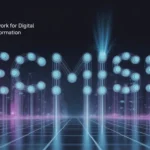and The digital world thrives on systems that can handle data, processes, and intelligence at scale. Businesses today look for ways to integrate their operations seamlessly, while ensuring agility and cost efficiency. This is where ecmiss comes into play. Although it might sound technical, its importance in shaping enterprise strategies, enhancing customer experiences, and improving decision-making cannot be underestimated.
Users searching for ecmiss usually want clarity on what it means, how it applies to business, and what benefits or challenges it carries. This article explores the complete scope of this concept, offering practical insights, expert commentary, and step-by-step applications that align with modern organizational needs.
What is ECMISS?
Ecmiss can be best described as a structured approach that integrates Enterprise Content Management (ECM) with Information Systems Strategy (ISS). It serves as a framework where organizations manage digital content, streamline workflows, and align technological tools with long-term strategic goals. By unifying these concepts, businesses ensure better governance of data and smoother communication across departments.
At its core, this model is about balancing efficiency with control. It enables enterprises to keep their content organized while maintaining compliance, accessibility, and usability across teams and stakeholders.
Why ECMISS Matters Today
The relevance of this system has grown with the exponential rise of digital information. Companies no longer struggle with scarcity of data; instead, they face the challenge of organizing and utilizing it meaningfully. Ecmiss provides that missing link.
Organizations that embrace such a framework can experience streamlined document workflows, reduced operational costs, and faster decision-making. Moreover, it allows for robust collaboration between teams, helping leaders anticipate market trends and adapt without delay.
Core Components of ECMISS
The structure of ecmiss relies on a few critical pillars that keep it functional and impactful:
- Content Management: Ensuring every piece of digital information is stored, indexed, and accessible when needed.
- Strategic Alignment: Connecting information systems to organizational goals so every tool or process contributes to business success.
- Data Security and Compliance: Safeguarding sensitive data against breaches while following industry regulations.
- Workflow Optimization: Automating repetitive tasks to free up time for innovation and value-driven activities.
The Benefits of ECMISS
The value of this framework lies in its benefits, which resonate across industries. It empowers organizations to work smarter, not harder. By structuring content and linking it with strategy, companies can:
- Enhance decision-making with real-time, reliable data.
- Improve collaboration between departments and global teams.
- Save costs by eliminating redundant processes.
- Ensure compliance with regulatory requirements.
- Scale operations without compromising efficiency.
Challenges in Implementing ECMISS
While the benefits are attractive, organizations also face challenges when deploying such a system. Integration with existing legacy tools can prove complex. Employees may resist changes in workflows, fearing disruption or job redundancy. Additionally, balancing security with accessibility requires careful planning.
Overcoming these challenges demands leadership commitment, employee training, and the right choice of tools that support flexibility and growth.
How ECMISS Supports Digital Transformation
In the era of cloud computing, AI, and machine learning, digital transformation has become essential. This approach acts as a catalyst in the process. By aligning content with strategy, businesses can innovate faster, introduce new digital services, and maintain agility.
For instance, a multinational retailer adopting this solution could unify customer data across regions, personalize shopping experiences, and optimize supply chain operations in real time.
Real-World Applications of ECMISS
This model finds its place in multiple industries. In healthcare, it helps in managing patient records securely while allowing doctors to access information instantly. In finance, it ensures compliance with international regulations and supports accurate reporting and In education, it streamlines student data and enhances collaboration between faculty and learners.
The adaptability of the system makes it suitable for both large enterprises and growing startups.
Step-by-Step Guide to Implementing ECMISS
Implementing such a framework requires a systematic approach:
Assessment – Begin by analyzing the current state of content management and information systems. Identify gaps, redundancies, and opportunities for improvement.
Planning – Define clear objectives, align them with strategic goals, and select the right tools to support integration.
Execution – Deploy the chosen systems, migrate data carefully, and set up workflows that encourage collaboration and efficiency.
Training – Equip employees with the necessary knowledge to use the model effectively. Training reduces resistance and builds confidence.
Monitoring and Optimization – Continuously track performance, identify new challenges, and refine strategies for sustained success.
The Role of Technology in ECMISS
Technology plays a central role in making ecmiss functional. Cloud platforms, AI-powered analytics, and automation tools are key enablers. Cloud ensures scalability and accessibility, while AI supports predictive insights. Automation reduces manual tasks, freeing resources for innovation.
By combining these technologies, organizations create a resilient system that adapts to evolving business landscapes.
Ecmiss in Small and Medium Enterprises
Small and medium-sized enterprises (SMEs) can benefit significantly from adopting this model. Often, SMEs lack the resources of large corporations, but by using a structured content and strategy framework, they can punch above their weight. The system helps them reduce costs, improve efficiency, and compete effectively with larger players.
ECMISS for Remote Work Environments
With remote and hybrid work models becoming the norm, this solution provides a foundation for seamless collaboration. It allows employees to access documents securely, share insights instantly, and stay aligned with organizational goals regardless of location.
This ensures productivity does not suffer when teams operate across borders and time zones.
The Future of ECMISS
The future of such frameworks looks promising. As businesses adopt technologies like blockchain, AI, and IoT, the scope will expand. It will not only manage content and align strategies but also create intelligent ecosystems that anticipate needs and provide proactive solutions.
Organizations that invest in these strategies today will be better prepared for tomorrow’s challenges.
ECMISS Best Practices
For successful adoption, businesses must follow best practices:
- Begin with a clear strategy and measurable goals.
- Choose flexible tools that integrate well with existing systems.
- Focus on user-friendly solutions to increase adoption.
- Regularly review and update processes to remain aligned with changing business environments.
Common Misconceptions About ECMISS
Many believe that ecmiss is only for large corporations. In reality, even small organizations can implement scaled versions of it. Another misconception is that it replaces human effort. Instead, it enhances human decision-making by providing reliable data and structured workflows.
Frequently Asked Questions
What does ecmiss stand for?
Ecmiss combines Enterprise Content Management with Information Systems Strategy, creating a unified framework for managing content and aligning it with business goals.
Is ecmiss suitable for small businesses?
Yes, small businesses can implement simplified versions of the framework to improve efficiency and reduce costs.
How does ecmiss improve collaboration?
By centralizing content and aligning it with strategy, this model enables teams to share information, access data quickly, and work seamlessly across departments.
What challenges can occur with ecmiss adoption?
The main challenges include resistance to change, integration with existing systems, and balancing data security with accessibility.
Does ecmiss require advanced technology?
While advanced tools enhance its functionality, businesses can start with basic platforms and scale gradually.
How does ecmiss relate to digital transformation?
Ecmiss acts as a bridge between content management and strategic goals, making digital transformation smoother and more effective.
Conclusion
Ecmiss is more than just a business buzzword; it is a vital framework for aligning enterprise content and strategic goals. By streamlining workflows, enhancing collaboration, and ensuring compliance, it supports organizations in navigating the complex digital landscape.
Businesses that adopt this system position themselves for long-term success, adaptability, and growth. Whether you are a startup, SME, or large corporation, embracing ecmiss could be the turning point in your digital journey.






